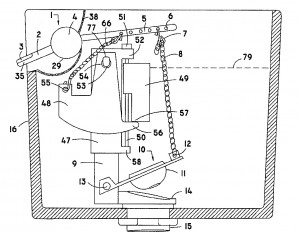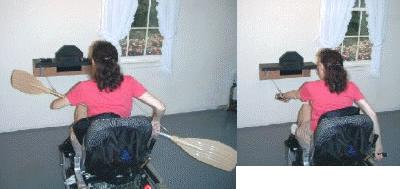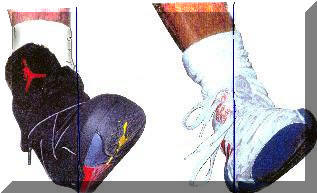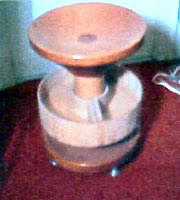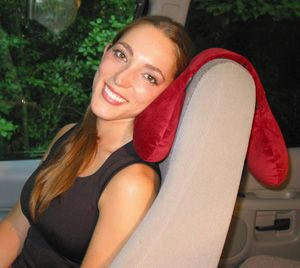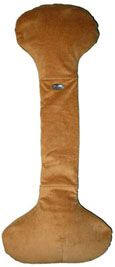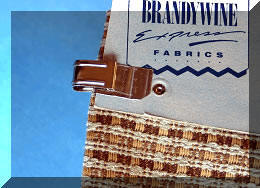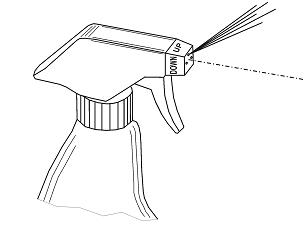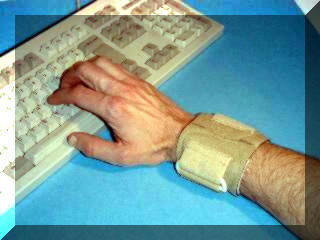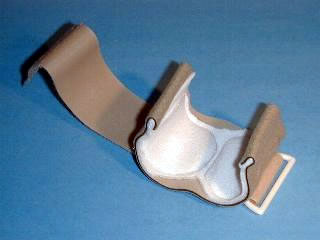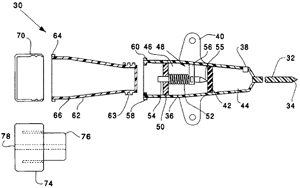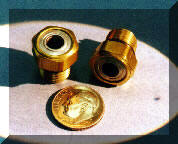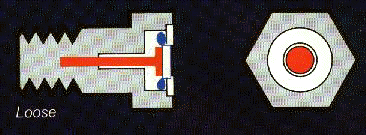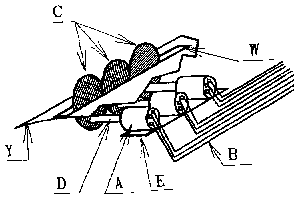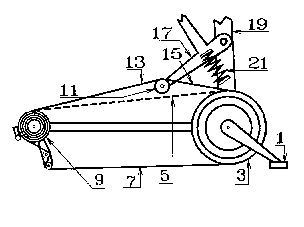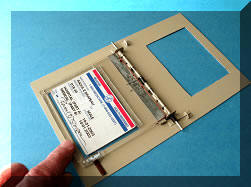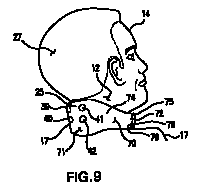Our members have created and developed some very clever inventions. For those that are interested in such intellectual properties, we present a select set here. Contact information is also provided along with the description of the invention.
PDF copies or online versions of the respective patents can be reviewed by clicking on the patent number links. If your computer does not open PDF documents download the latest version of Adobe Reader.
If you are a current INCA Member and you would like your invention featured here, contact us and include:
- Title of Your Invention
- Patent number(s)
- A short description
- A link to your Patent online or a PDF copy
- Contact information for interested parties (if desired)
- Website (if applicable)
Dual Flush Toilet Devices – US Patent Number 8584268
A dual flush device is disclosed to provide a full flush for removing solid waste and a water-saving partial flush for removing liquid or light solid waste in a toilet. It includes a first flush handle attached to a shaft to raise a lever to open a flapper valve, and a second flush handle that overlaps the first handle and opens the flapper valve through the first handle. A float assembly is disclosed to be used either with the dual flush device or with the original single flush lever assembly to prematurely close an opened flapper valve and reduce water consumption.
If interested contact James Han at jthan3 @ hotmail.com or 301-929-9009.
Simulated Kayak, Aerobic Upper-Body Exerciser – US Patent Number 6328677
Because of its alternating power stroke, continuous action and focus on exercising muscles of the upper body, a kayak provides an excellent aerobic exercise. This invention simulates the action of a kayak, thereby providing excellent aerobic exercise to the upper body. Treadmills, stair steppers, rowing machines, cross-country ski simulators and jogging all require the use of the user’s legs. This device is for those with an injury, or a chronic condition such as arthritis, for those who must exercise from a wheelchair, or for those who are able to use their legs while exercising, but just want a smaller machine.
In use, each end of a continuous cord attaches to individual hand grips, or in the best simulation of a kayak, to either end of a rigid shaft. The internal mechanisms accurately simulate the action of a kayak by using inertial, frictional, and speed-dependent retarding forces, all without the need for storage space or a suitable body of water. Purely mechanical, Kayaker requires no electricity.
The components are mounted on a small, rigid base plate that can be temporarily attached to a fixed surface such as a wall. The user can sit on a chair or wheelchair, or even stand in front of the machine while exercising. Because there is no large, heavy and unwieldy apparatus to take up floor or storage space, the machine can easily be removed for storage when the exercise is complete.
Contact: Raoul Drapeau at 703-573-6055
Naturally-Contoured Shoe Sole – US Patent Number 5317819
The invention is a shoe sole structure that mimics the natural stability of the bare foot by being naturally contoured to the sole of a wearer’s bare foot, including both inner and outer surfaces of the shoe sole. This “bare foot” shoe sole invention is based on the observation that when one stands stationary with full body weight on a bare foot on the ground, if that bare foot is tilted sideways to the outside as far as it will go, the foot is perfectly stable because the ankle lies above the point of contact (photo on right). In stark contrast, the same foot when shod in any conventional shoe is highly unstable in the same position since the ankle lies outside the point of contact. Most ankle sprains occur in this position and such sprains are the single most common athletic injury. In laboratory tests, and as illustrated in the graphic, test subjects wearing an engineering prototype could sustain peak forces as high as 7 times their body weight pain free, whereas test subjects with conventional high top basketball shoes sustained severe ankle pain at peak forces of only 1/3 times body weight.
The patented design has been licensed to Adidas America. Up to 90 percent of Adidas athletic footwear (about 50 million pairs) will incorporate it within a few years. The first “bare foot” shoes were introduced by Adidas in August, 1996 as “Feet You Wear”. To date over twenty models have been introduced in nearly ever product category and have been heavily promoted in the largest advertising campaign every undertaken by Adidas America. Steffi Graf won the 1996 U.S. Open wearing the first tennis version of Feet You Wear. Kobe Bryant, the youngest starter ever in a NBA All Star game, established himself during the recent game as the apparent heir to Michael Jordan, while wearing the sixth version of Feet You Wear basketball shoes.
Contact: Frampton Ellis, Anatomic Research, 2895 S. Abingdon St, Arlington, VA 22206; 703-931-6111
Ergonomic Tilting Stool – US Patent Number 5112103
A gardening stool that can also be used on hard surfaces. The stool includes a seat, an upright column and rounded base with spheres on its periphery that allows the stool to be rocked on soft soil, but not on hard surfaces. A tool holder can be mounted on the column to hold gardening tools.
Contact: Stephen Downer; 443 Deerwood Drive, Fredericksburg, VA 22401-2214; 540-834-2396
The Headbone™ Headrest – US Patent Number 6254189
The Headbone™ headrest is an adjustable body support device that is designed to hang over a seat back to support the user’s head and neck. The non-skid material on the back of the Headbone™ helps it stay in place.
The Headbone(tm) is available in four styles and can be used in several different ways:
- Use the small or large pillow-end
- Position it on the seat where it is best suited for your comfort
- Adjust the firmness to suit your preference by shaking the buckwheat hull filler through the neck
Contact: Victoria Closson 410-326-0468 or visit The Headbone web site
Fabric Holder – US Patent Number 7086635
Fabric stores often display their materials in racks. Some samples are folded and held by a device that requires that holes be drilled in the fabric and held in place on clamshell-type holders by Chicago Binding posts. In order to get the best view of the fabric, it is necessary to remove the fabric from the holder. After viewing it, you must then re-fold it carefully so that all the holes in the multiple folds of the fabric (which are often ill-defined) line up. Then you re-install the binding posts. This is a time-consuming and frustrating process that unnecessarily aggravates customers. This invention eliminates the binding posts and replaces them by simple clamps that compress the edges of the holder and firmly grip the fabric. They are simple to remove and replace and do not require punching holes in the fabric sample.
Contact: Raoul Drapeau, 703-573-6055
Trigger Spray – US Patent Number 7007867
Anyone who has used a trigger sprayer knows that you must hold the bottle vertical, so that the dip tube remains in the liquid. This makes reaching some surfaces above or below the user almost impossible, since as the bottle is tilted, the dip tube will no longer be submerged. In some applications though, the user typically needs to direct the spray up or down, and not just straight ahead. This use is inconvenient for any user, but can be even painful for those with arthritis.
This invention solves this problem by modifying the spray head design to allow the spray to be directed up, down or straight ahead, simply by turning the sprayer tip to a different position. It solves the problem of the partially-full bottle, as well as the problem of it being inconvenient, if not impossible, to direct the spray in an upward or downward direction using a conventional spray tip.
Contact: Raoul Drapeau, 703-573-6055
Video-Wall Viewing-Angle Enhancement System – Patent Pending (Allowed)
This invention solves a problem in “video walls”, wherein there is an unavoidable and annoying gap in the viewed image due to the space between adjacent monitor units. Prior art has proposed solving this effect by using full-screen, low-power cylindrical magnifying lenses to increase the image size just enough to cover the gap. However, when the viewer is off axis, the problem reasserts itself, thereby limiting the usefulness of the solution. Additionally, the cost of such large lenses is considerable. My invention uses small, simple, cylindrical-section lenses placed around the periphery of the screen in combination with modifications to the driving electronics to produce a unitary image over a wide viewing angle, and at a considerably-reduced lens cost.
Contact: Raoul Drapeau, 703-573-6055
Forearm Splint System for Prevention and Treatment of Carpal Tunnel Syndrome – US Patent Number 6120472
Presenting a patent-pending invention for the treatment and/or prevention of carpal tunnel syndrome and other CTDs (cumulative trauma disorders). The device allows people whose work requires them to perform repetitive motions to avoid carpal tunnel syndrome symptoms such as numbness, tingling and/or pain in the thumb, index and middle fingers. Additionally it may help other cumulative trauma disorder symptoms in all digits of the hand and muscles of the forearm.
My invention is a functional forearm splint system that effectively and non-invasively addresses this widespread problem. Most splints or braces treat these problems by immobilizing the wrist in a static position. My invention allows full range of motion of the wrist while widening the carpal tunnel to relieve compression of the median nerve. Due to the full range of motion allowed by my splint system, consumers will find this device very functional because they will be able to participate in work and/or sport activities while wearing it. The invention works by using adjustable tensioning to cause rotation of two curved, semi-rigid pieces of material within the splint system that repositions the bones of the forearm to reduce the tension in the transverse carpal ligament.
Current treatment options include physical therapy and surgery. Physical therapy may be helpful but can be expensive and time consuming. Often it requires two to three visits per week for several weeks, and the symptoms may be only temporarily relieved. Surgical attempts to solve this problem involve cutting out this ligament. Not only is the outcome of surgery uncertain, it may be temporarily disabling or even result in complications such as formation of excessive scar tissue entrapping the median nerve in the carpal tunnel. However, with the use of my brace the patient may respond more quickly and dramatically to a course of physical therapy.
Contact: Richard Singer, Tunnel Tech Products
Softening conduit for carrying fluids into and out of the human body – US Patent Number 5634913
A medical device for introducing fluid treating material to or removing a fluid material from a body cavity of a human or animal, including: a hollow, needle-like structure having a proximal end and a distal end, the proximal end having a beveled tip and being formed from a polymer which is sufficiently rigid at ambient temperature to permit puncture of skin by the beveled tip, and which becomes soft after a predetermined period of time exposed to body temperature and body fluids, thus preventing bodily trauma; and a hub attached to the distal end of the hollow needle-like structure and having a diameter greater than that of the hollow needle-like structure, the hub including a connector for attachment of a handle or a device for introducing fluid treating material to or removing fluid from the body cavity.
Contact: Florence Stinger
Miniaturized Fluid Pressure Indicator – U.S. Patent 5189979
In many applications which employ a Bourdon type pressure gage, there is really no need for the user to know the exact pressure, but only whether it is either at, above or below a certain critical level. This invention addresses the need for an extremely simple, compact, rugged and inexpensive pressure-indicating device for such applications. These patented devices are smaller than a dime, and indicate the desired pressure by a dramatic color change observed in an indicator window about <” in diameter. The few simple internal components which make up the device do not move, but simply flex with pressure, so the devices are uncommonly rugged and long-lived
The indicators may be tailored for almost any pressure, and prototypes have been made to indicate pressures ranging from 10 psi up to 200 psi. We have developed two variations which, for a 150 psi example indicator of each type, are as follows: the first variation is called “Red-Eye”, and has a black color up to 150 psi, which quickly changes to a bright fluorescent red at pressures above that value. The second variation, is called “Green-Eye”, and will have a black indication up to 140 psi, change to green at 150 psi, and then to yellow at 160 psi and above.
Contact: Charles H. Popenoe, 301-320-3303
Smartbolt, a tension-indicating Bolt – U.S. Patents Number 4904132
DTI fasteners are the only tension-indicating fastener system that provides an eye-catching visual indication of proper tension, thereby helping avoid dangerous situations. They provide a means of determining fastener tension by visual inspection alone, and without contact. The cost of DTI indicating bolts is a fraction of bolt4.gif (27506 bytes)that of strain-strain-gauged bolts, because the only instrument needed is the human eye. They are reliable, reusable and reproducible through countless cycles of tensioning and loosening. The operation of DTI indicating bolts is based on the response of an optical micro indicator element to the deflection of one internal portion of a fastener relative to another, as the fastener elongates under tensile loading. The micro indicator is a miniaturized optical absorptance cell that reproducibly changes its spectral characteristics as cell thickness is varied. The indicator in a precision-grade bolt begins to turn color from red-orange at 80% of proof load (17,000 foot pounds for a 1/2-13 x 2.75″ bolt), and has completely turned to black at 100%.
Contact: Charles H. Popenoe, 301-320-3303, Smartbolt website
Aircraft Spoiler Systems – U.S. Patent Numbers 5564656, 5588620, 5445346 and 5458304
This is a suite of patents describing several applications of segmented, actuated, spoiler systems for use on aircraft to interrupt the normal laminar airflow, and thereby reduce stress on various airframe members and also to provide additional means of control.
Patent 5,564,656 describes a specific type of actuated spoiler, the segmented disk. The disks are placed in parallel arrays below a slot in the airfoil surface, and rise into the airstream upon actuation. They can be used on the nose, top of wings, forward surfaces of horizontal and vertical stabilizers and in the intake sections of gas turbine engines.
Patent 5,588,620 describes arcs of segmented spoilers mounted on intake airfoil surface of cantilever-suspended jet engines. In combination with strain sensors, spoiler surfaces are actuated to release radial forces generated during takeoff.
Patent 5,445,346 describes the use of actuated spoilers on the forward top and bottom elevator tail surface for independent backup pitch control of the aircraft in the event of loss of hydraulic elevator control.
Patent 5,458,304 describes disk spoilers mounted on both surfaces of the vertical stabilizer of an aircraft to augment rudder and aileron controls. These spoilers are used in combination with data from pressure sensors, also mounted on the tail surface, to minimize tail drag and structural flight stress.
Contact: Raymond D. Gilbert, 6501 Inwood Drive, Springfield, VA 22150
Automatic transmission for bicycles – U.S. Patent Numbers 5407396, 5571056 and 5618240
This group of patents describes an “automatic transmission” for bicycles that shifts a chain derailleur in response to a rider-selected range of pedal pressures. Automatic shifting in response to sensed pedal force protects the rider’s leg muscles from undue strain and operates the bicycle with near optimum pedal-to-wheel ratios. The patented pedal-force shifter technology senses pedal force shift limits and uses the output of a mechanical or electronic computer to communicate “faster” or “slower” signals to adjust derailleur positions on front and rear chain-sprockets.
In operation, a cable-movement distributor is attached to a bicycle’s right chain stay, passing short cables to front and rear derailleurs. A sensing module reaches around the top length of chain which rocks the computer-linked sensors continuously sensing pedal pressure. The rider’s energy is thus efficiently transmitted to the rear wheel with an energy cost of the automatic features limited to spring-recoverable sensing forces.
Contact: Raymond D. Gilbert, 6501 Inwood Drive; Springfield, VA 22150
Card Copier – US Patent Number 7050145
When you visit a doctor’s office for the first time, they make copies of both sides of your health cards in two separate passes, flipping the card(s) over between scans. This process is inefficient and often uses two sheets of paper. This invention allows the office staff to make copies of both sides of several documents in one pass of the office copier. It does this by placing the cards in a transparent, hinged, spring-loaded holder that is placed on the copier platen. The first side is copied normally. Then, as the scanner passes by the trailing edge of the cards in the holder, a latch releases, and the holder quickly flips. The other side of the cards is now exposed to the scanner, which completes the copying process. Copies of both sides of the cards are now on the same side of a single sheet of paper.
Contact: Raoul Drapeau, 703-573-6055
Magnetic Brainwave Stimulation Apparatus – US Patent Number 6978179
The present invention relates to a streamlined magnetic brain wave stimulation apparatus, which receives electronic signals based upon pre-recorded brain wave patterns. The brain wave patterns actuate electromagnets placed on a user’s neck adjacent to the user’s brainstem, to create a plurality of magnetic pulses to influence a user’s brain centers to influence a desired mental state.
Contact: Glen Kotapish (co-inventor)

